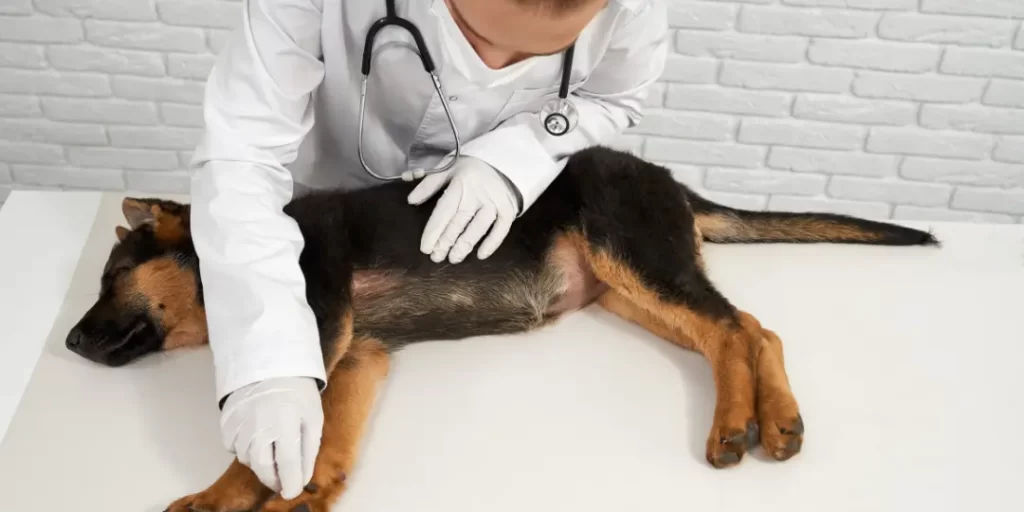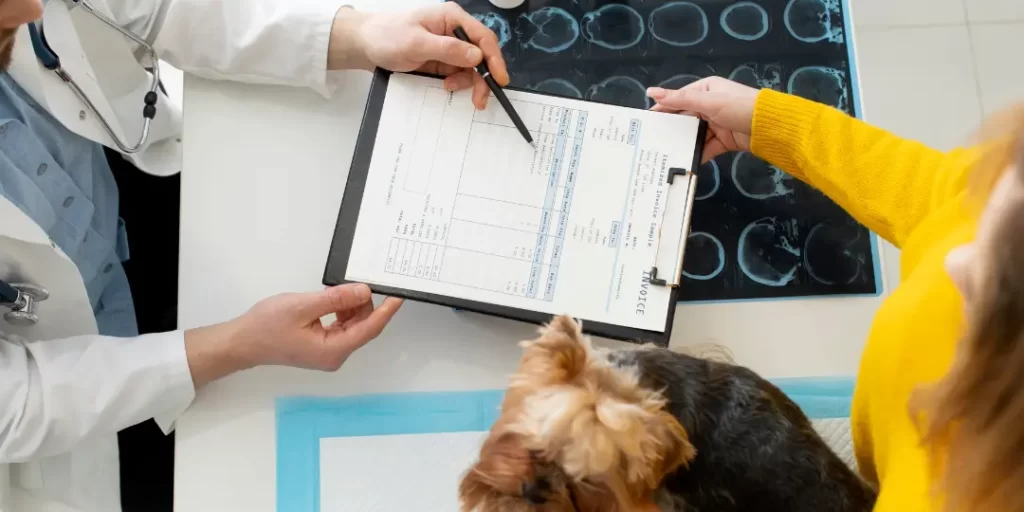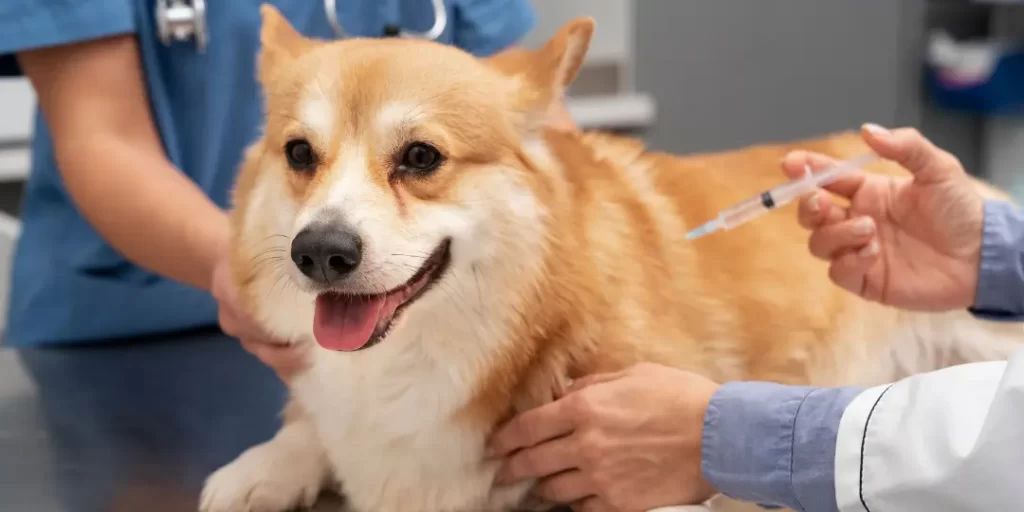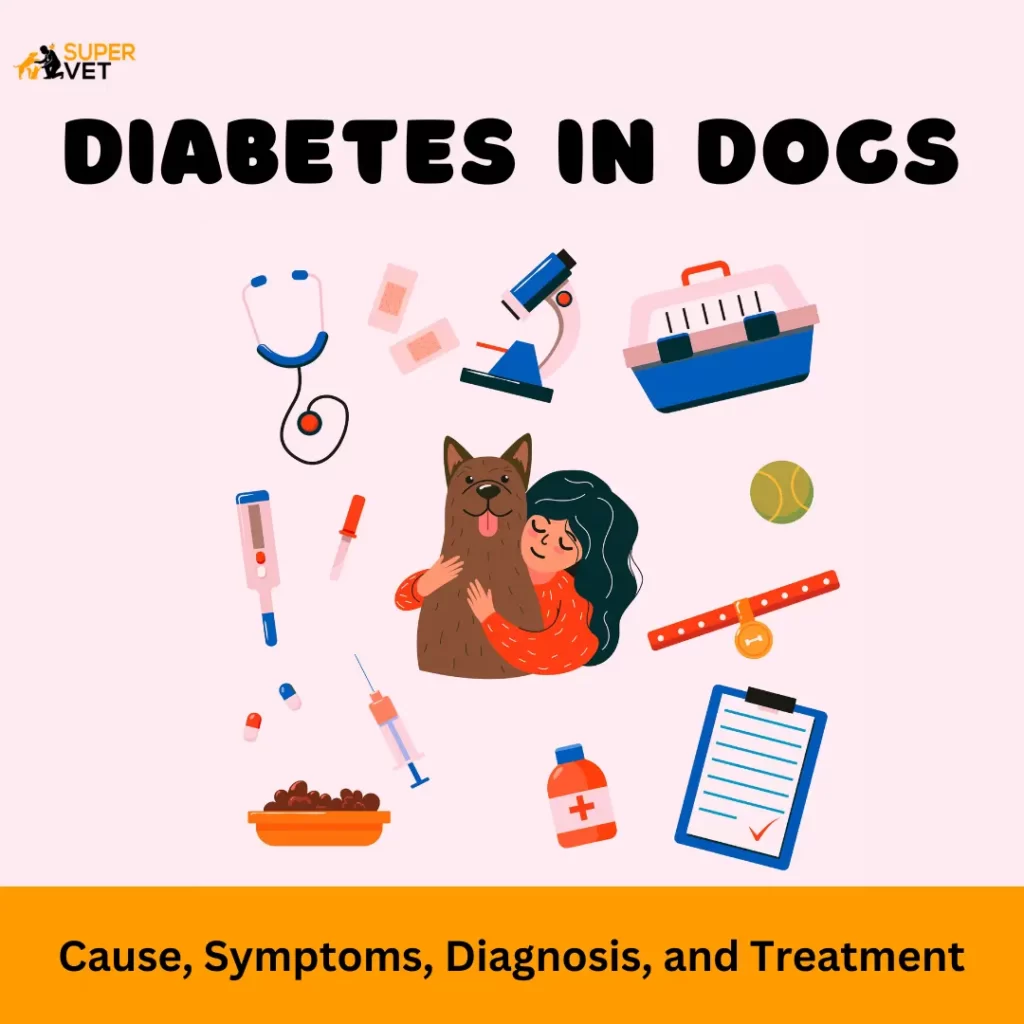A blog post on Diabetes In Dogs and its Cause, Symptoms, Diagnosis, and Treatment.
Diabetes is a chronic disease that affects both humans and animals, including apes, pigs, and horses. Although diabetes can’t be cured, it can be successfully managed.
It is a disease that is characterized by high levels of sugar in the blood. A condition in which the body cannot produce insulin, or does not produce enough insulin to regulate blood sugar levels.
Diabetes mellitus, or “sugar diabetes,” is the type of diabetes seen most often in dogs. It is a metabolism disorder. Metabolism refers to how the body converts food to energy.
While diabetes is a serious diagnosis, the options for treatment and management strategies may allow your dog to live a long, good life. While there is no cure for dog diabetes. There is a very good chance that symptoms are identified and treatments are laid out. Your dog can live a relatively normal life.
Types of diabetes in Dogs
The condition can affect dogs and cats but is far more common in dogs. Diabetes in dogs can be diagnosed with a simple urine test.
There are three types of diabetes:
- Type 1 diabetes, is an autoimmune disease.
- Type 2 diabetes, occurs when cells are unable to properly use insulin.
- Gestational diabetes is exceptionally rare and occurs during pregnancy.
There is another variant of diabetes called diabetes Insipidous. It is also known as “Water diabetes” as the body’s inability to conserve water.

Cause of Diabetes in Dogs
Diabetes is a disease that is caused by the pancreas not producing enough insulin. Insulin is a hormone that regulates blood sugar levels. When the pancreas doesn’t have enough insulin, this can lead to high blood sugar levels and other problems.
Diabetes in dogs can be caused by many different things such as genetics, autoimmune disease, obesity, hormone therapies, steroids, pancreatitis, and Cushing’s disease.
To be in the best possible position as a dog parent, you will want to know how to tell if your dog has diabetes. What can be done to prevent diabetes? and what treatment options should your dog be diagnosed with?
Symptoms and Diagnosis

With any kind of diabetes in dogs, blood sugar levels rise, and this causes excess glucose to be present in the blood.
High blood sugar, a result of diabetes, may affect the body’s ability to function properly, leading to increased risks for problems like heart disease and stroke in dogs. Because diabetes dogs cannot take in glucose, diabetes dogs typically lose weight, with a normal appetite or increased appetite.
Common symptoms of diabetes in dogs-
- Excessive urination
- Excessive thirst
- Hunger
- Weight loss even with a regular appetite
- High blood glucose
- Glucose in the urine
- Unusually sweet-smelling or fruity breath
Later signs of diabetes in Dogs-
- Anorexia – complete loss of appetite
- Lethargy and depression
- Vomiting
- Cataracts
- Worsening weight loss
- Recurrent infections
- Urinary tract infections
- Chronic skin infections
- Cataract formation, blindness
The diagnosis of diabetes in dogs can be complicated and difficult as there are many factors that can lead to the development of diabetes including age, obesity, and genetics.
There are also some other tests that can be done including urine testing for sugar or ketones, and blood glucose testing. A complete blood count test is to determine if there is an infection present.
Treatment of Diabetes in Dogs

Once your dog has started diabetes care, you will want to keep an eye on your dog because there is no one-size-fits-all treatment, and your vet will work with you to come up with a best-practice plan and provide guidelines to keep.
Treatment for diabetes in dogs may include insulin therapy, dietary management, and exercise. Early in treatment, this might include frequent visits to the clinic for tests and adjustments in medications.
Most often, dogs develop insulin-dependent DM, which is similar to Type 1 DM in humans as their diabetes pancreas does not make insulin. With rare exceptions, dogs with DM need between one and two daily shots of insulin to survive; insulin is given directly under the skin. Dogs with diabetes in dogs generally require two insulin shots each day to stabilize blood sugar levels.
Treatment of your dog’s diabetes will also involve other measures besides insulin.
But the hope is that soon, a proper combination of medications, dosages, diet, and monitoring at home can be achieved. Which will allow you to consistently keep your dog’s blood sugar in check, and will help your dog lead a full, happy life.
Final words
Uncontrolled diabetes has a devastating impact on the dog’s body, so early detection and appropriate management are vital. Caring for pets who are diabetic Dogs and cats who have diabetes generally require a lifetime of care. It includes a special diet, a good exercise routine, and, especially for dogs, daily injections of insulin. The cost of treatment may vary depending on how fast the dog’s glucose is regulated by insulin. Whether any other underlying conditions are contributing to diabetes.
Supervet provides the best Online Pet Services in Kota where you can also consult with vets about your dog’s health and take guidance from them.

